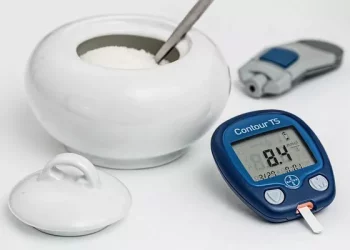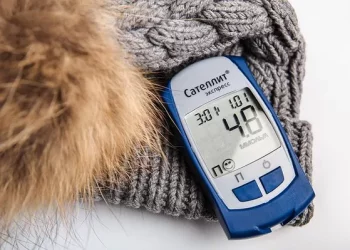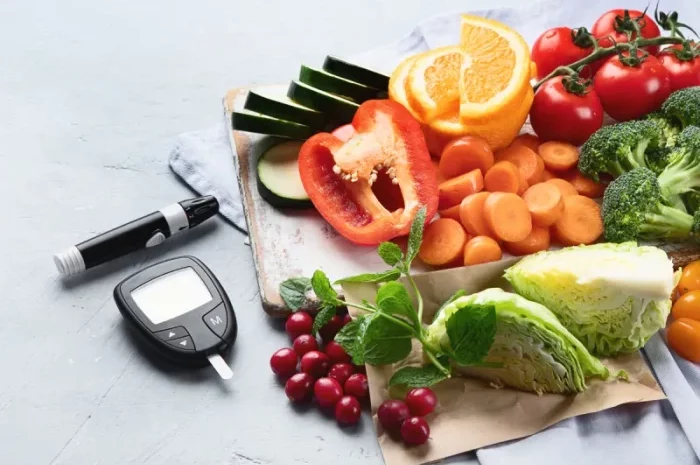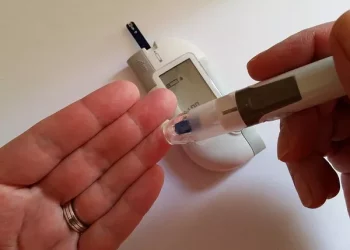Hypoglycemia, commonly known as low blood sugar, occurs when the glucose levels in the blood drop below normal levels, typically below 70 mg/dL (3.9 mmol/L). This condition can cause a variety of symptoms such as dizziness, sweating, shaking, confusion, irritability, and in severe cases, loss of consciousness. Hypoglycemia can occur in individuals with diabetes who take insulin or other glucose-lowering medications, but it can also affect people without diabetes under certain circumstances, such as after prolonged fasting, excessive alcohol consumption, or certain medical conditions.
Managing hypoglycemia is crucial to prevent its adverse effects. One of the most effective ways to address low blood sugar is by consuming specific foods that help restore blood glucose levels to normal. This article provides a detailed overview of the foods that individuals with hypoglycemia should eat to manage and prevent low blood sugar episodes. We will also discuss the role of a balanced diet, timing of meals, and general strategies for managing hypoglycemia effectively.
Understanding Hypoglycemia and Its Causes
Before discussing the specific foods that a hypoglycemic person should eat, it’s important to understand the condition’s underlying causes and how blood sugar levels can become imbalanced.
Blood sugar levels are regulated by the body’s ability to maintain a balance between glucose intake (from food) and glucose utilization (for energy). When blood sugar levels drop too low, the body’s normal response is to release hormones such as glucagon and adrenaline to increase glucose production. However, this response can be delayed or ineffective in certain situations, leading to hypoglycemia.
Common causes of hypoglycemia include:
Diabetes and Medication: For individuals with diabetes, hypoglycemia is often triggered by taking too much insulin or other blood sugar-lowering medications. It can also occur if a person with diabetes delays meals, exercises more than usual, or drinks alcohol without eating.
Fasting or Skipping Meals: When a person does not eat for extended periods, the body uses up stored glucose (glycogen), leading to low blood sugar levels.
Excessive Alcohol Consumption: Alcohol can interfere with the liver’s ability to release glucose into the bloodstream, particularly when consumed without food.
Medical Conditions: Certain medical conditions such as insulinoma (a tumor of the pancreas), hormonal imbalances (e.g., adrenal insufficiency or hypothyroidism), and liver or kidney diseases can also cause hypoglycemia.
Medications: Some medications, including certain antibiotics and heart medications, can interfere with blood sugar regulation, contributing to hypoglycemia.
Symptoms of Hypoglycemia
Hypoglycemia can cause a range of symptoms that may vary in severity. Early symptoms may include:
-
Shaking or trembling
-
Sweating
-
Hunger
-
Anxiety or irritability
-
Confusion or difficulty concentrating
-
Weakness or fatigue
As blood sugar levels continue to drop, more severe symptoms may occur, such as:
-
Difficulty speaking
-
Blurred vision
-
Headache
-
Dizziness or lightheadedness
-
Loss of consciousness (severe cases)
It is essential to recognize the early symptoms of hypoglycemia to prevent the condition from progressing to more serious levels. Immediate action, including consuming fast-acting carbohydrates, is necessary to bring blood sugar levels back to normal.
The Role of Diet in Managing Hypoglycemia
One of the most important aspects of managing hypoglycemia is maintaining a balanced diet that supports stable blood sugar levels. This means eating regular meals and snacks that include the right combination of carbohydrates, protein, and healthy fats to prevent blood sugar from dropping too low.
Carbohydrates play a crucial role in regulating blood sugar levels because they are the body’s primary source of glucose. When consumed, carbohydrates are broken down into glucose and absorbed into the bloodstream, increasing blood sugar levels. For individuals prone to hypoglycemia, consuming complex carbohydrates and fiber-rich foods is particularly important as they provide a slow and steady release of glucose into the bloodstream, helping to prevent sudden drops in blood sugar.
Key Foods for Managing Hypoglycemia
When managing hypoglycemia, it is essential to focus on foods that are rich in complex carbohydrates, fiber, and protein, while avoiding foods with a high glycemic index (GI) that can cause rapid fluctuations in blood sugar. Below are some of the best foods for managing hypoglycemia.
1. Whole Grains
Whole grains, such as oats, quinoa, brown rice, and whole wheat bread, are excellent sources of complex carbohydrates. These foods are high in fiber and have a low glycemic index, meaning they are digested slowly and provide a steady release of glucose into the bloodstream. The fiber content helps regulate blood sugar levels and prevents spikes and crashes.
Benefits: Whole grains provide long-lasting energy and help prevent hypoglycemic episodes. They also improve insulin sensitivity and overall metabolic health.
Examples: Oats, brown rice, quinoa, whole wheat bread, whole wheat pasta, barley.
How to Eat: Incorporate whole grains into meals by adding them to breakfast (e.g., oatmeal or quinoa porridge), lunch (e.g., brown rice with vegetables), and dinner (e.g., whole grain pasta or barley salads).
2. Non-Starchy Vegetables
Non-starchy vegetables, such as leafy greens, broccoli, cauliflower, zucchini, and bell peppers, are low in carbohydrates and high in fiber, vitamins, and minerals. They have a minimal effect on blood sugar levels and are excellent choices for preventing or managing hypoglycemia.
Benefits: These vegetables are nutrient-dense and provide a rich source of antioxidants and fiber, which help regulate blood sugar and improve overall health.
Examples: Spinach, kale, lettuce, broccoli, cauliflower, cucumbers, bell peppers, green beans, asparagus.
How to Eat: Include a variety of non-starchy vegetables in salads, stir-fries, and soups. They can also be steamed, roasted, or sautéed as side dishes.
3. Legumes and Beans
Legumes, such as beans, lentils, chickpeas, and peas, are rich in protein and fiber, which help stabilize blood sugar levels. These foods are slowly digested and provide a sustained release of glucose into the bloodstream, making them ideal for preventing hypoglycemia.
Benefits: Legumes have a low glycemic index and are packed with fiber, making them effective for managing blood sugar levels. They also provide a plant-based source of protein, which helps keep you feeling full and satisfied.
Examples: Black beans, kidney beans, chickpeas, lentils, split peas, edamame.
How to Eat: Add legumes to soups, salads, stews, or use them as a base for plant-based burgers or dips (e.g., hummus).
4. Fruits with Low Glycemic Index
Fruits provide essential vitamins, minerals, and fiber. However, some fruits can cause rapid increases in blood sugar levels due to their high glycemic index (GI). For individuals with hypoglycemia, it is essential to focus on fruits that are low in GI and contain fiber, which helps slow the absorption of sugar.
Benefits: Low-GI fruits provide a steady release of glucose into the bloodstream, making them ideal for managing blood sugar levels. They are also rich in antioxidants, which support overall health.
Examples: Apples, pears, berries (e.g., strawberries, blueberries, raspberries), cherries, plums, grapefruit, and peaches.
How to Eat: Enjoy fresh fruit as a snack or add it to smoothies, yogurt, or salads. Pairing fruits with a source of protein or healthy fat can further stabilize blood sugar levels.
5. Nuts and Seeds
Nuts and seeds, such as almonds, walnuts, chia seeds, flaxseeds, and pumpkin seeds, are rich in healthy fats, protein, and fiber. These foods have a minimal effect on blood sugar and are excellent for preventing or managing hypoglycemia.
Benefits: Nuts and seeds are nutrient-dense and provide a slow and steady source of energy. They also help stabilize blood sugar levels and support heart health due to their high content of monounsaturated and polyunsaturated fats.
Examples: Almonds, walnuts, chia seeds, flaxseeds, pumpkin seeds, sunflower seeds.
How to Eat: Snack on a small handful of nuts or seeds, or add them to oatmeal, smoothies, or salads for added texture and nutritional benefits.
6. Lean Protein Sources
Lean protein sources, such as chicken, turkey, fish, eggs, tofu, and low-fat dairy, are important for stabilizing blood sugar levels. Protein slows the digestion of carbohydrates and helps keep you feeling full for longer, preventing fluctuations in blood glucose.
Benefits: Protein helps regulate blood sugar by slowing the absorption of glucose and promoting satiety. It also supports muscle health and provides essential amino acids.
Examples: Skinless chicken breast, turkey, salmon, tuna, tofu, eggs, Greek yogurt, cottage cheese.
How to Eat: Incorporate lean protein into meals by adding chicken or tofu to salads, preparing grilled fish or turkey for dinner, or enjoying eggs as a breakfast option.
Managing Blood Sugar with Proper Meal Timing
In addition to choosing the right foods, meal timing plays a critical role in managing hypoglycemia. To avoid periods of low blood sugar, it’s important to eat regularly throughout the day, including snacks between meals.
Frequent Small Meals: Instead of large meals that can cause blood sugar fluctuations, aim for smaller, more frequent meals that include a balanced combination of carbohydrates, protein, and healthy fats. This can help maintain a steady release of glucose and prevent hypoglycemic episodes.
Avoid Skipping Meals: Skipping meals or going too long without eating can lead to low blood sugar. It is essential to plan meals and snacks throughout the day to maintain energy levels and prevent hypoglycemia.
Pre-Exercise Snacks: If you engage in physical activity, it’s important to eat a small snack containing carbohydrates and protein about 30 to 60 minutes before exercise to prevent hypoglycemia during or after exercise.
Conclusion
For individuals managing hypoglycemia, the right dietary choices are essential for maintaining stable blood sugar levels. Focusing on whole grains, non-starchy vegetables, legumes, low-GI fruits, nuts, seeds, and lean proteins can help prevent hypoglycemic episodes and support overall health. In addition to eating the right foods, meal timing and portion control are crucial for managing blood sugar levels.
By adopting a balanced, nutrient-dense diet and paying attention to meal timing, individuals with hypoglycemia can reduce the risk of low blood sugar and improve their quality of life. As always, it is important to work closely with a healthcare provider or a registered dietitian to create a personalized plan tailored to individual needs.
Related topics:
What Foods Should a Type 2 Diabetic Avoid?






















